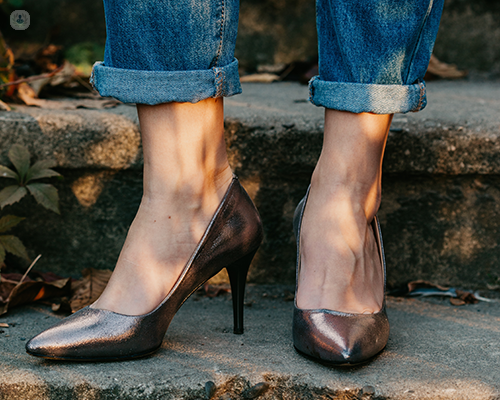Bunions: When is the best time to have surgery?
Autore:A bunion is a deformity on the joint at the base of the big toe that occurs when the foot’s bones move out of place, causing the joint to protrude.
Surgery is the only way to remove a bunion, but it is a treatment option that should solely be performed after careful assessment. Mr Barry Rose, leading consultant orthopaedic surgeon, explains more.

What causes bunions?
It is unknown what the cause of bunions is in every case. Often, there may be a strong family history with relatives, such as parents and grandparents, having had bunions. There may also be a causative role from a tight shoe, for example, from women’s shoes and high-heeled shoes. In some cases, degeneration (osteoarthritis) can lead to a bunion forming.
When is bunion surgery necessary?
The main indication for the consideration of surgery is pain - either in the bunion itself or in the lesser toes that may also be affected - that cannot be managed by simple non-operative measures, such as changing shoes, taking painkillers or modifying activities.
What is the average cost of bunion surgery?
Prices vary, but patients could expect a price between £6,000 - £8,000.
How can patients prepare for bunion surgery?
Patients will have limited mobility post-operatively for approximately six weeks. For this reason, they should prepare at home accordingly to make recovery as easy as possible.
What happens during bunion surgery?
Bunions are usually the result of an abnormal position of the bones. There are many different ways to correct bunions through surgery, but almost all involve breaking and re-setting the bones in a straight position through the removal of the prominent painful bone.
Surgery is usually performed under general anaesthesia, but it can also be undertaken under a regional block to numb the lower leg. The operation takes about an hour, and is a day-case procedure.
What should patients expect after bunion surgery?
After bunion surgery, the foot needs to remain bandaged for a period of six weeks. Bandages are changed and replaced every two weeks to ensure that the wound is healing well and that any stitches can be removed.
Patients are usually asked to take it easy, elevate the leg as much as possible, and walk on their heels only, for the entirety of the six-week period.
After six weeks, normal comfortable footwear can be worn and usual activities undertaken. Swelling, however, can sometimes take several months to fully settle.
If you are considering bunion surgery and wish to consult your options with an expert, make sure to visit Mr Rose’s Top Doctors profile today.


